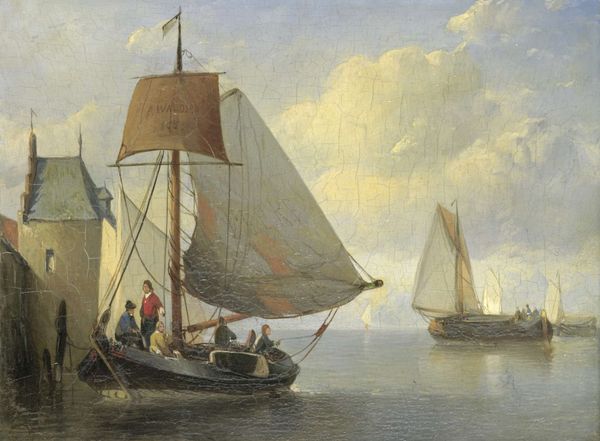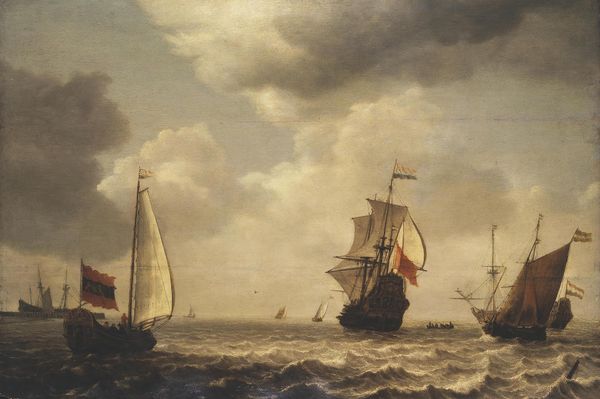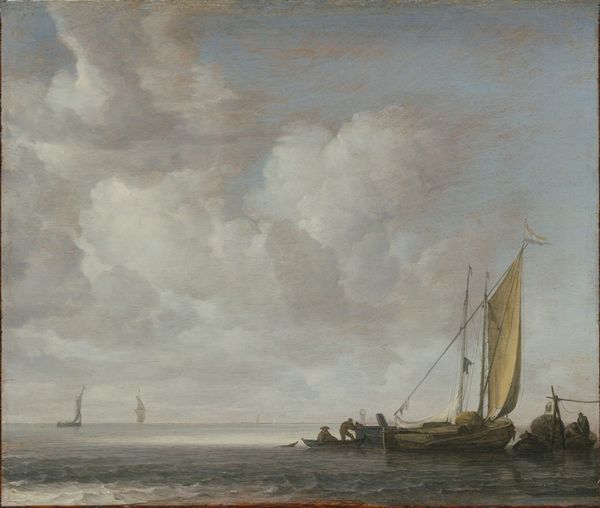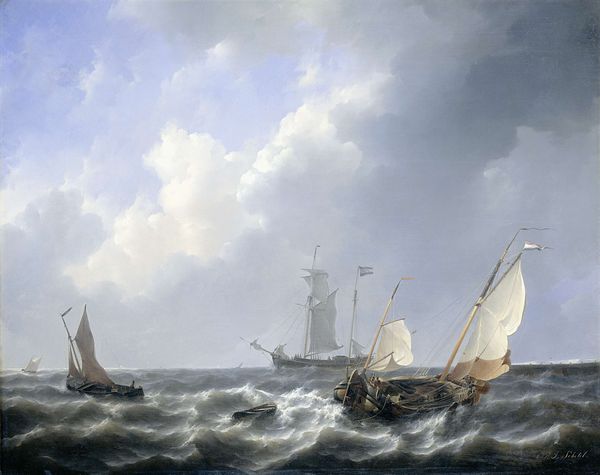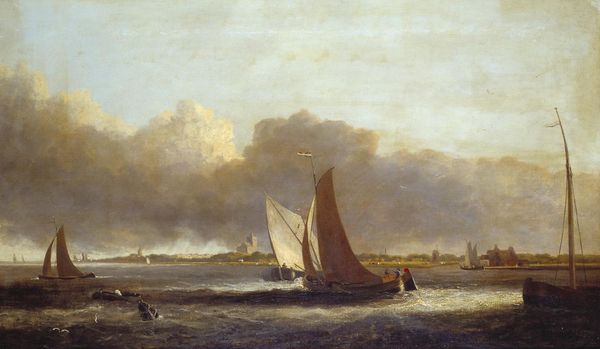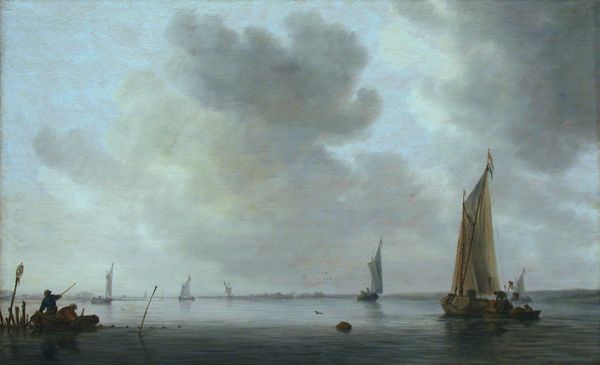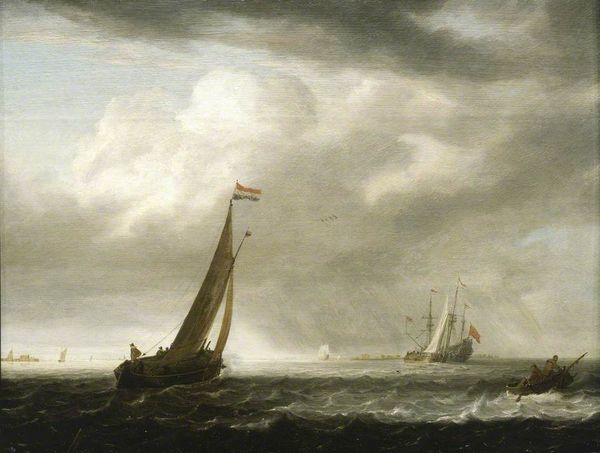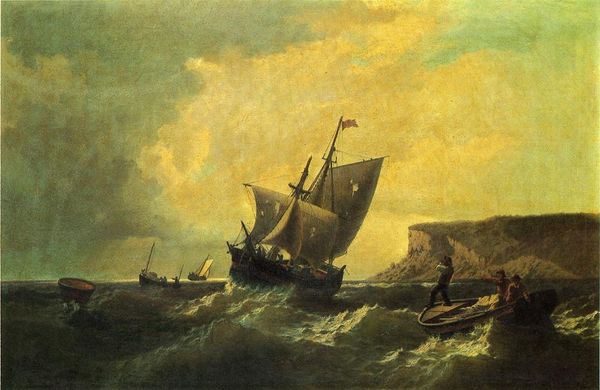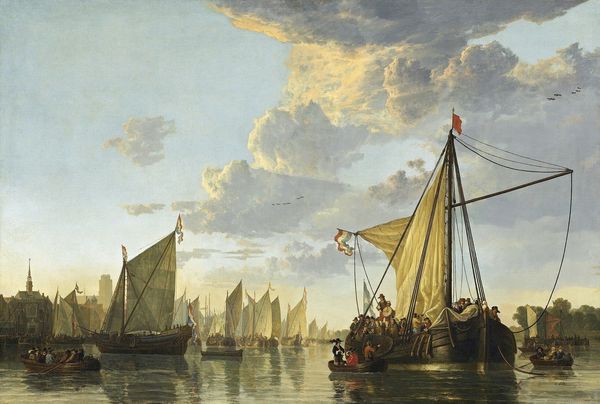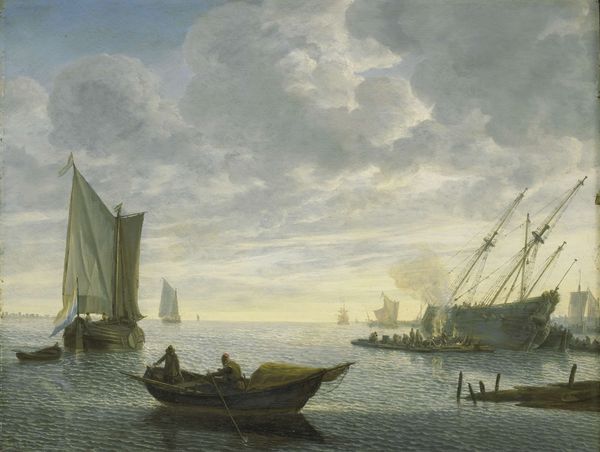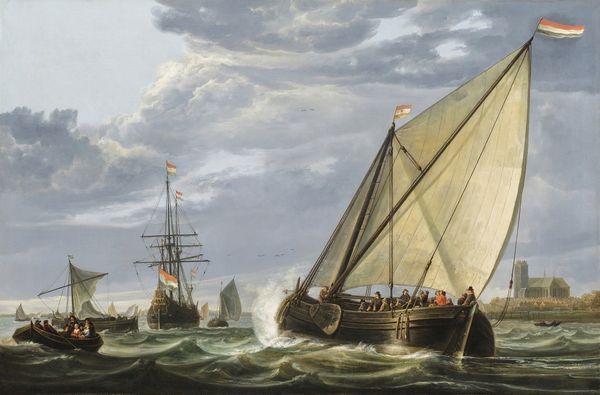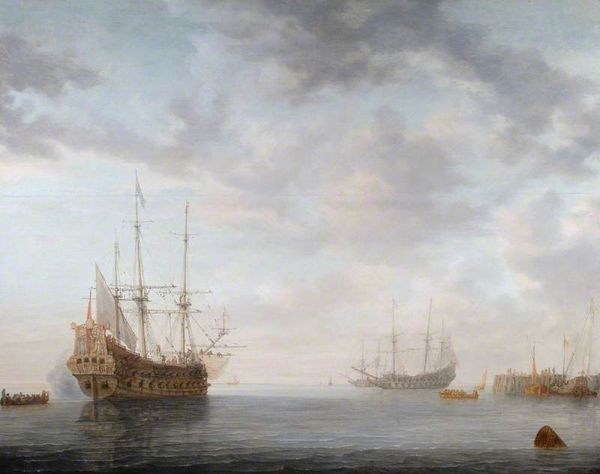
painting, oil-paint
#
baroque
#
dutch-golden-age
#
painting
#
oil-paint
#
landscape
#
oil painting
#
water
#
realism
Copyright: Public domain
Curator: Welcome. We’re standing before Simon de Vlieger's "A Dutch Yacht from Zeeland," painted around 1629. Editor: There's a gentle stillness to it, wouldn't you say? The yacht cuts softly across the water, almost like a dream. The light, how muted it is, feels very northern. Curator: The muted palette certainly contributes to the atmosphere. Dutch Golden Age painting wasn’t just about representing the world but constructing a vision of Dutch identity and prosperity. What do you think of that relationship as shown here, Editor? Editor: Consider what the yacht itself signifies: skilled craftsmanship, naval power, trade routes. And look how subtly Vlieger renders the wood. It's not romanticized. You sense the weight and the grain, the labour in building this vessel, reflecting a booming mercantile class that prioritizes commerce above all else. Curator: Yes, these details do root it in its material context, however I see the artwork's significance extending beyond commerce. To the average 17th century Netherlander, these types of vessels would likely have had significant meaning to nationalistic fervor. We also cannot ignore that it does not include, or account for, those that were the labor behind production and national strength during that era. Editor: Very interesting perspective, one might have a point here about missing information, though the yacht is very beautiful, its sails catching the wind with evident texture. He focuses our eye there. The rest recedes. In essence, Vlieger displays not just wealth and labour but a keen sense of visual hierarchy through material rendering and perspective. Curator: Certainly, it demonstrates the sophisticated understanding and skillful depiction of depth and space. How might all this information, regarding perspective, production, or nationalism, affect its value today? Editor: I believe it helps viewers realize these were never neutral artworks, even as realism was becoming prominent. Curator: I couldn't agree more. Examining historical artworks through lenses of labour, context, gender, and race makes for such relevant discussions, particularly today. Editor: Exactly! It bridges history with a modern lens. So thought provoking, Simon De Vlieger!
Comments
No comments
Be the first to comment and join the conversation on the ultimate creative platform.
